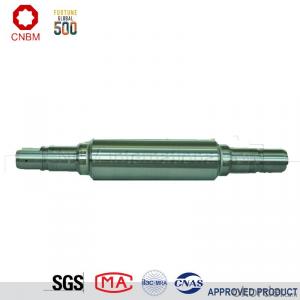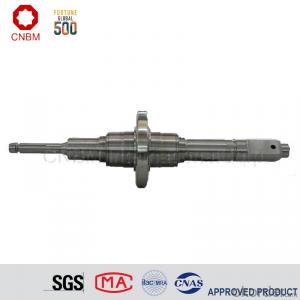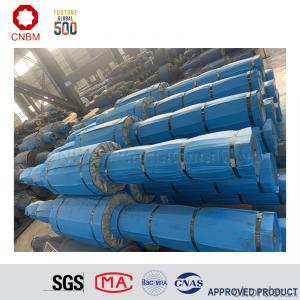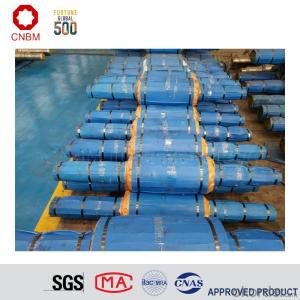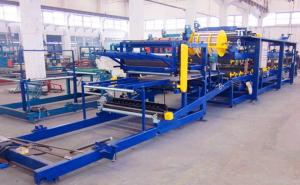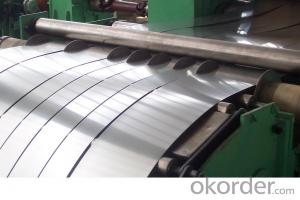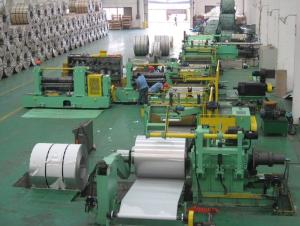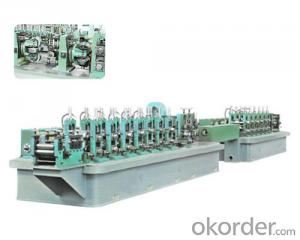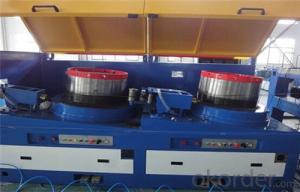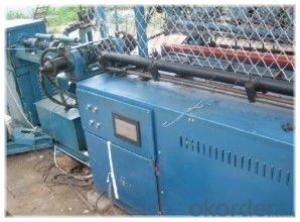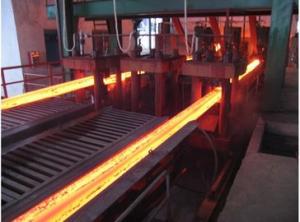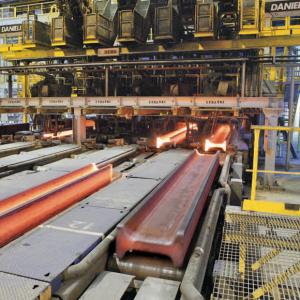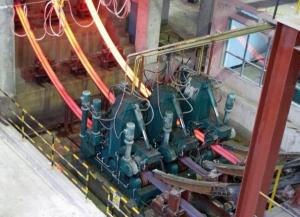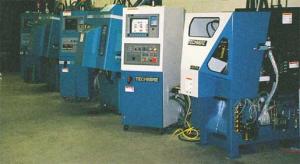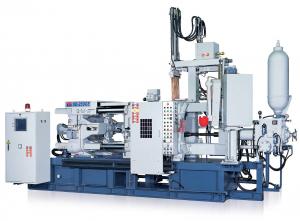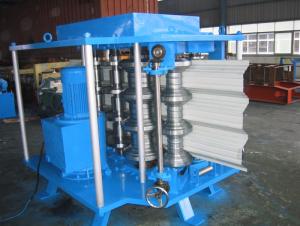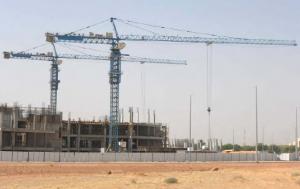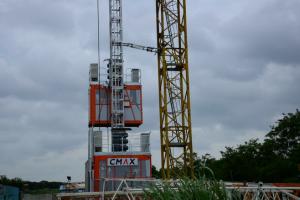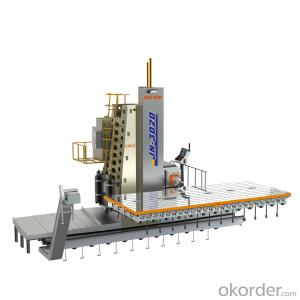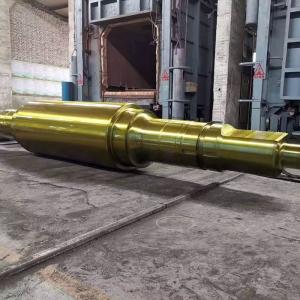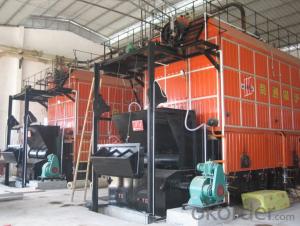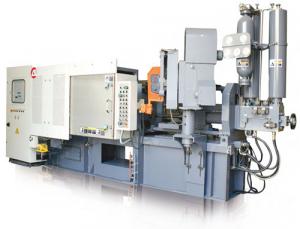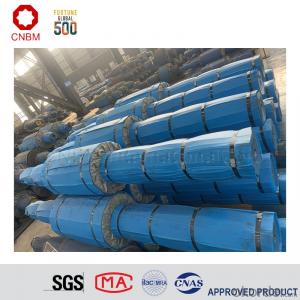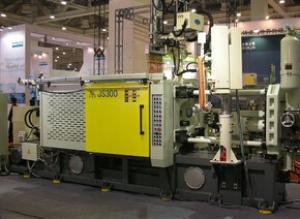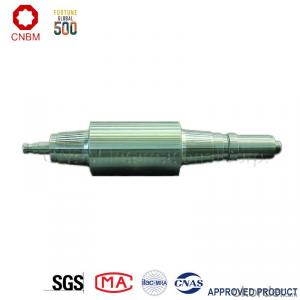Mill Rolls High Speed Steel Roller With Good Quality
- Loading Port:
- Tianjin
- Payment Terms:
- TT OR LC
- Min Order Qty:
- 2 m.t.
- Supply Capability:
- 41000 m.t./month
- Option:
- 650X1780X5540; 650X1780X5540; 680X2080X5920
OKorder Service Pledge
OKorder Financial Service
You Might Also Like
Item specifice
Company Profile
CNBM International Corporation (CNBM International) is the most important trading platform of CNBM Group Corporation, a state-owned company under the direct supervision of State-owned Assets Supervision and Administration Commission of the State Council.
CNBM Group is integrated with four business segments: Manufacture, R&D,Sets of equipment and Logistics trading.Mill rolls are our main products.
CNBM International is highly recognized by its business partners and clients all over the world and has established good business relationship with the customers in over 120 countries and regions all over the world.

The product introduction of mill roll
Equipped with advanced technological facilities on melting, casting, forging, heat treating and mechanical machining, our factory has formed 9 professional complete roll manufacturing lines of cast steel, cast iron and forged steel rolls such as strip mill rolls, heavy section mill rolls, wire & bar rolls, special shaped rolls and small-sized cold rolls and specialized production lines of bloom and slab CCM, coke oven equipments and wind power products. Annual production capacity of mill rolls is 500,000 tons, metallurgical equipment is 80,000 tons.

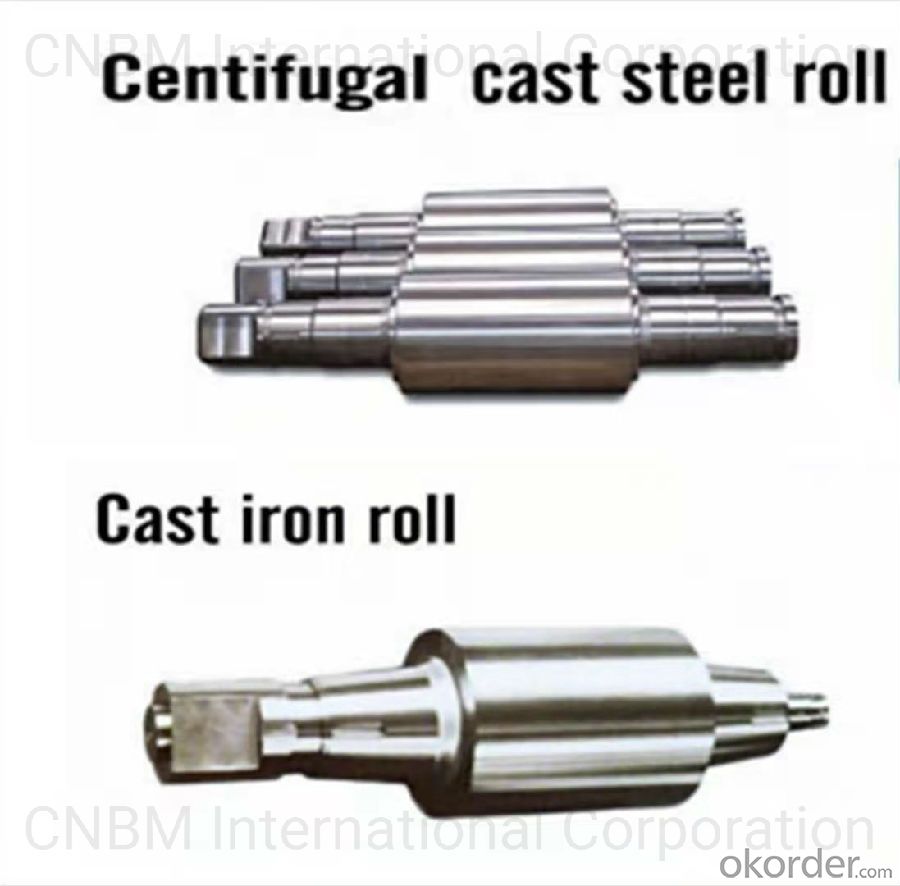
Workshop
Workshop is the core of our company and undertakes all of scientific research work. The company specially produces and supplies all kinds of roll used for hot strip mill, cold strip mill, plate & heavy plate mill, large-sized section mill, universal mill etc.

Products & Specification
| Mill | Application | Material | Product Specification | ||
| Hot Strip Mill | Large-sized vertical roll | Special alloy cast roll, Adamite | All Sizes | ||
| Small-sized vertical roll | Adamite, HiCr iron | ||||
| Roughing work roll | Special alloy cast steel, Adamite, HiCr steel, Semi-HSS, HiCr iron | ||||
| Finish rolling | Early stand work roll | HiCr iron, HSS | |||
| Later stand work roll | ICDP, HSS | ||||
| Finishing back-up roll | Duplex cast steel | D≤¢2000,W≤80t | |||
| Alloy forged steel | D≤¢2000,W≤75t | ||||
| Temper rolling | Work roll | HiCr iron | All Sizes | ||
| Alloy forged steel | |||||
| Back-up roll | ICDP | ||||
| Duplex cast steel | D≤¢2000, W≤80t | ||||
| Alloy forged steel | D≤¢2000, W≤75t | ||||
| Mill | Application | Material | Product specification |
Cold strip mill & Single stand cold mill | Work roll | Alloy forged steel | All Sizes |
| Intermediate roll | Alloy forged steel | ||
| Temper roll | Alloy forged steel | ||
| Back-up roll | Duplex cast steel | D≤¢2000,W≤80t | |
| Alloy forged steel | D≤¢2000,W≤75t | ||
Largesized universal structural mill | Break-down roll | Special alloy cast steel, alloy nodular iron | All Sizes |
| Horizontal collar | High carbon adamite (duplex) | ||
| Vertical collar | High carbon adamite, HiCr iron | ||
| Edger roll Edger roll | High carbon adamite | ||
| Shaft | Alloy forged steel |
| Mill | Application | Marterial | Product Specification | |
| CSP | Vertical Roll | Adamite, Special alloy cast steel, HiCr iron | All Sizes | |
| Roughing work roll | Semi-HSS, HiCr Steel | |||
| Finish rolling | Early stand | HiCr iron, HSS | ||
| Later stand | ICDP, HSS | |||
| Roughing & Finishing back-up roll | Duplex cast steel | D≤¢2000,W≤80t | ||
| Alloy forged steel | D≤¢2000,W≤75t | |||
| Steckel Mill | Vertical roll | Adamite, Special alloy cast steel | All Sizes | |
| Roughing work roll | ICDP, HiCr iron | |||
| Finishing work roll | HiCr iron, ICDP | |||
| Back-up roll | Duplex cast steel | D≤¢2000,W≤80t | ||
| Alloy forged steel | D≤¢2000,W≤75t | |||
| Plate & Heavy plate mill | Rough rolling | 2-hi work roll | Special alloy cast steel, Tool steel | All Sizes |
| 4-hi work roll | HiCr iron, ICDP | |||
| Finishing work roll | HiCr iron, ICDP | |||
| Single stand work roll | HiCr iron, ICDP | |||
| Back-up roll | Duplex cast steel | D≤¢2000,W≤80t | ||
| Alloy forged steel | D≤¢2000,W≤75t | |||
Quality Control
The company has the most advanced experimental and testing equipments in global mill roll industry, including direct-reading spectrometer, spectrum analyzer , X-ray fluorescence analyzer, scanning electronic microscope, energy disperse spectroscopy, X-ray diffractometer, image analyzer, high/low temperature metallographic microscope, X-ray stress meter, brittleness temperature tester, thermal analogue machine, dilatometer, macro and micro hardness tester, OMNISCAM-1X automatic flaw detection, USN60 ultrasonic flaw detector, magnetic powder and non-destructive flaw detection etc,. The advanced inspection equipments and experimental methods provide guarantee for quality control and experiment on material, usability test and performance.
Professionals & Comprehensive Inspection
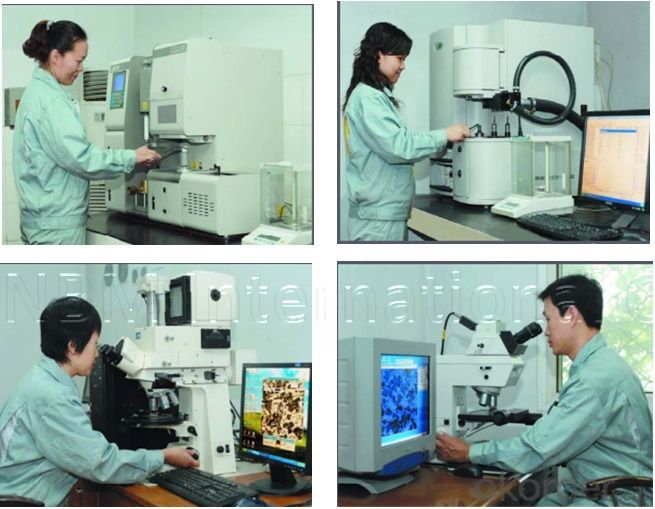
The factories of CNBM invested 2.3 billion RMB for large-scale
CNBM international Corporation has completed equipment and technology upgrade transformation, which was concentrated on three projects, production line of centrifugal casting rolls for hot strip and plate mill, forged roll for cold/hot strip mill, national class technology center and roll material lab. Through upgrade transformation, the following targets have been achideved:
(1)It becomes the world's biggest specialized mill roll maker with the largest production scale, the most complete specifications of products and the most extensive coverage of various rolls used on rolling mill.
(2) The technology of equipments has reached international leading level.
(3) "Mechanization, automation, intellectualization, digitization" of equipments obviously improve the quality control ability.
(4) New types of research instruments improve the R&D capacity of products.
Customers Visit
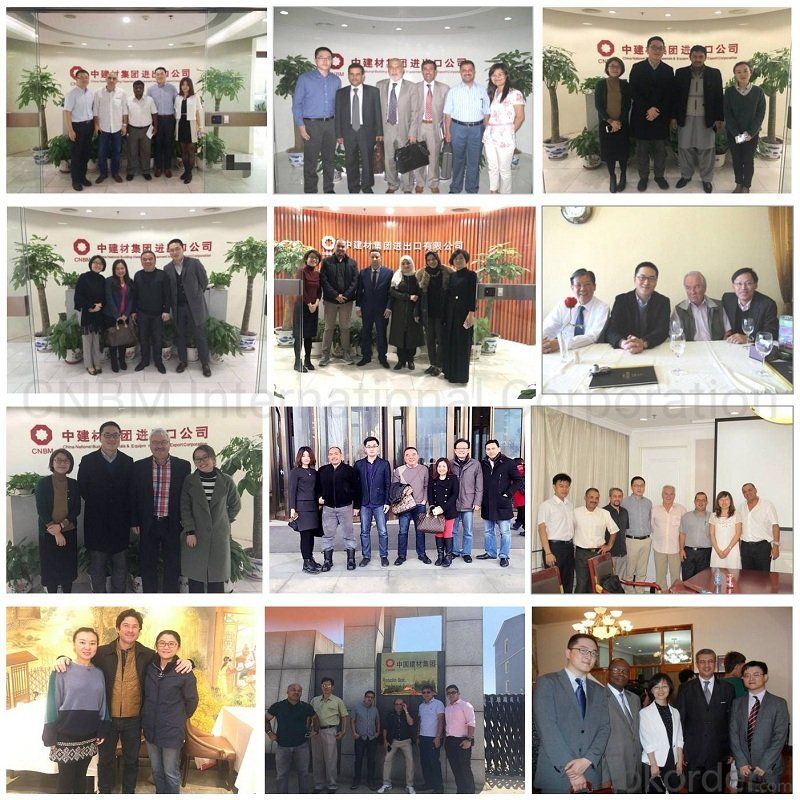
FAQ
Q:Are you a trading company or manufacturer?
A:CNBM is a large-scale central governmental industrial group with its own manufacturing sector, research and development sector, trading sector and logistics sector.
Q:I have some special requirement about specifications.
A:We have a well-rounded product range, which endows us with the capability of applying many special specifications. Please feel free to contact us with yours.
Q:Do you accept OEM service?
A:Yes, we do.
Q:What is your delivery time?
A:It depends on the size/complexity of your order and our own production schedule. Usually we provide a faster delivery than the industry's average.
Q:What is the payment term?
A:Our payment terms are negotiable.
Q:Can I have my own logo on the product?
A:Sure, we can apply your own logo on the products according to your requirement.
- Q:How is molten metal poured into molds in metal casting machinery?
- The process of pouring or casting involves the pouring of molten metal into molds in metal casting machinery. This process consists of various steps to ensure the successful creation of the desired metal object. To begin with, the mold is prepared by cleaning and coating it with a refractory material. This is done to prevent the molten metal from sticking to the mold and to withstand the high temperatures involved. Depending on the type of metal being cast and the complexity of the object, the mold can be made of sand, metal, or ceramic. Once the mold is ready, the molten metal is prepared in a separate furnace. The metal is melted at extremely high temperatures, typically using electric or fuel-fired furnaces, until it reaches a liquid state. This process also involves the removal of any impurities or gases present in the metal to ensure the quality of the final product. After reaching the desired temperature and consistency, the molten metal is transferred to a ladle or crucible. These containers are specifically designed to hold and pour the molten metal, often equipped with handles or mechanical devices for easier handling. Subsequently, the molten metal is poured into the prepared mold with great precision and control. This step is crucial to avoid spillage or defects in the final product. The metal is poured slowly and evenly to ensure complete and uniform filling of the mold, without any air pockets or voids. Once the mold is filled, the molten metal is left to cool and solidify. The cooling time may vary depending on the type and size of the metal object. After solidification, the mold is opened, and the newly formed metal object, known as the casting, is removed. Additional finishing processes such as grinding, polishing, or machining may be necessary to achieve the desired shape and surface quality. In conclusion, the metal casting process involves a carefully controlled procedure of preparing the mold, melting the metal, transferring it to a ladle, and pouring it into the mold. This process is of utmost importance in producing high-quality metal objects with the desired shape and characteristics.
- Q:How is the sand removed from the final product in metal casting machinery?
- In metal casting machinery, the sand is typically removed from the final product through a process called shakeout. Shakeout involves vibrating or shaking the castings to dislodge and remove the sand particles that are adhered to the surface. After the casting solidifies and cools down, it is typically placed on a vibrating conveyor or table. The vibrations cause the sand to become loose and separate from the casting. As the sand particles become dislodged, they fall through the gaps or openings in the conveyor or table, leaving the clean casting behind. In some cases, additional methods may be employed to further remove any remaining sand particles. These methods can include using compressed air or mechanical brushes to blow or brush away the sand from the casting's surface. Once the sand is removed, the casting may undergo further finishing processes such as grinding, polishing, or shot blasting to enhance its surface finish and remove any remaining traces of sand or other impurities. These processes ensure that the final product meets the required specifications and quality standards.
- Q:What are the considerations for air pollution prevention and control in metal casting machinery?
- There are several important considerations for air pollution prevention and control in metal casting machinery. First and foremost, it is crucial to implement effective engineering controls in the machinery itself. This may involve the installation of efficient capture and ventilation systems to capture and remove airborne pollutants generated during the casting process. By properly designing and maintaining these systems, the release of pollutants into the surrounding air can be minimized. Another consideration is the use of appropriate materials and technologies in the casting process. For instance, using cleaner fuels and reducing the use of hazardous chemicals can significantly reduce air pollution. Additionally, utilizing advanced technologies, such as low-emission burners or filtration systems, can further help in controlling and reducing air pollutants emitted during the casting process. Regular maintenance and inspection of the machinery are also vital considerations. Ensuring that the machinery is properly maintained and functioning optimally can help minimize emissions and prevent any potential leaks or malfunctions that may contribute to air pollution. Furthermore, it is important to establish proper training and education programs for the workers involved in metal casting. By educating them about the importance of air pollution prevention and control, as well as providing them with the necessary knowledge and skills to operate the machinery safely and efficiently, the risk of air pollution can be significantly reduced. Compliance with environmental regulations and standards is another critical consideration. Industries involved in metal casting must adhere to local, national, and international regulations pertaining to air pollution control. This may involve obtaining permits, conducting regular emissions testing, and implementing proper monitoring and reporting systems. Finally, fostering a culture of environmental responsibility within the organization is essential. Encouraging employees to actively participate in pollution prevention and control efforts, promoting sustainability, and continuously seeking innovative solutions can significantly contribute to reducing air pollution in metal casting machinery.
- Q:How does metal casting machinery handle the integration of software and automation systems?
- Metal casting machinery handles the integration of software and automation systems through the use of advanced technology and computer-controlled processes. With the advent of Industry 4.0, metal casting foundries have increasingly embraced automation and software integration to improve their production efficiency, accuracy, and overall operational performance. One way metal casting machinery handles the integration of software and automation systems is by utilizing programmable logic controllers (PLCs). These PLCs are responsible for controlling and monitoring various aspects of the casting process, such as temperature control, mold filling, and cooling. By integrating software into these PLCs, manufacturers can achieve precise control over the casting process, resulting in higher quality castings and reduced scrap rates. Additionally, metal casting machinery incorporates software and automation systems to enable real-time data collection and analysis. Through the use of sensors and monitoring devices, critical process parameters such as temperature, pressure, and flow rate can be continuously measured and transmitted to a centralized software system. This data can then be analyzed to identify trends, detect anomalies, and optimize the casting process for improved productivity and quality. Moreover, software integration enables seamless communication and coordination between different components of the metal casting machinery. For example, computer-aided design (CAD) software can be integrated with casting simulation software to optimize mold design and predict potential defects before actual production. This integration ensures that the design and manufacturing processes are aligned, leading to more accurate castings and reduced lead times. Furthermore, metal casting machinery is increasingly adopting robotic systems for tasks such as mold handling, pouring, and post-processing. These robots are equipped with advanced software and sensors, allowing them to perform complex and repetitive tasks with precision and consistency. By integrating these robotic systems with the overall control software, manufacturers can achieve higher levels of automation, reducing reliance on manual labor and improving overall productivity. In summary, metal casting machinery effectively handles the integration of software and automation systems through the utilization of technologies such as PLCs, real-time data collection and analysis, seamless communication between components, and robotic systems. These integrations result in improved production efficiency, enhanced quality control, and increased competitiveness in the metal casting industry.
- Q:What is metal mould, machine sand casting?
- General Auto Parts Factory is the metal mold, mechanical sand casting, a large number of pipeline
- Q:How do you maintain and clean metal casting machinery?
- Maintaining and cleaning metal casting machinery is crucial for ensuring its optimal performance and prolonging its lifespan. Here are some steps to follow: Firstly, it is essential to regularly inspect the machinery for any signs of wear and tear, such as loose or damaged parts, leaks, or excessive vibrations. This can be done by trained personnel who are familiar with the equipment. To maintain the machinery, it is important to follow the manufacturer's guidelines and recommendations for maintenance schedules. This typically includes regular lubrication of moving parts, checking and adjusting belts, chains, and gears, as well as inspecting and cleaning filters, screens, and vents. Cleaning the machinery involves removing any built-up dirt, dust, or debris that may accumulate during operation. This can be done by using compressed air or vacuum cleaners to blow or suck away the contaminants. Care should be taken to avoid damaging any sensitive components during the cleaning process. Certain parts of the machinery may require specialized cleaning methods. For example, cooling systems may need to be flushed periodically to remove scale or sediment buildup. In such cases, it is advisable to refer to the manufacturer's instructions or consult with a professional technician to ensure the correct cleaning procedure is followed. Regularly inspecting and maintaining the electrical components of the machinery is also crucial for safety and efficient operation. This involves checking for loose connections, damaged wires, and worn-out insulation. If any issues are identified, it is important to address them promptly by consulting a qualified electrician. In addition to routine maintenance and cleaning, it is recommended to keep a record of all maintenance activities, such as dates of inspections, repairs, and replacements. This record can help identify any recurring issues or patterns, enabling proactive maintenance and minimizing downtime. Finally, it is important to train and educate the operators and maintenance personnel on proper cleaning and maintenance procedures. This includes emphasizing safety precautions, such as wearing appropriate personal protective equipment, and providing clear instructions on how to handle and store cleaning agents and lubricants. By following these steps and ensuring regular maintenance and cleaning, metal casting machinery can operate at its best, minimizing breakdowns, reducing downtime, and maximizing productivity.
- Q:What are the different types of job roles and career paths in the metal casting industry?
- There are various job roles and career paths in the metal casting industry. Some common job roles include foundry workers, foundry supervisors, metallurgists, quality control technicians, patternmakers, molders, and machine operators. Career paths can include positions such as foundry manager, process engineer, research and development specialist, sales representative, and production planner. Additionally, there are opportunities for specialization in specific casting processes like sand casting, investment casting, or die casting, which can lead to more focused career paths within the industry.
- Q:How are binders applied and cured in metal casting machinery?
- Binders are typically applied to the sand mixture in metal casting machinery through a process called sand molding. In this process, the sand is mixed with a binder, such as clay or resin, to create a mold that will hold the molten metal. The binder helps to give the sand mixture cohesion and strength. Once the binder is applied, the mold is then cured in the metal casting machinery by heating it to a specific temperature. This curing process helps to harden the binder and ensure that the mold is stable enough to withstand the pouring of the molten metal.
- Q:How is the molten metal poured into the mold in metal casting machinery?
- Casting, a process in metal casting machinery, involves pouring molten metal into a mold. To begin, the mold is prepared by shaping it to the desired final product using pre-made molds or materials like sand or ceramic. Once the mold is ready, it is firmly attached to the casting machine. The molten metal, heated in a furnace until it reaches a liquid state, is then poured into a secure ladle or crucible. These containers are designed to safely hold and transport the molten metal. Next, the molten metal is poured into the mold, either manually by an operator or automatically by a robotic system, depending on the complexity and size of the casting machine. It is crucial to pour the molten metal slowly and evenly to prevent defects in the final casting caused by turbulence or air entrapment. After pouring, the molten metal is left to cool and solidify. The cooling time varies based on the metal type and casting size. Once solidified, the mold is opened or removed, revealing the newly formed metal casting. In summary, the process of pouring molten metal into a mold in metal casting machinery demands precision, control, and attention to detail to achieve the desired specifications and quality standards.
- Q:Can metal casting machinery produce complex shapes?
- Metal casting machinery has the ability to produce intricate shapes. Different metal casting processes, such as investment casting, die casting, and sand casting, can all create complex designs. These methods involve pouring molten metal into molds made from materials like sand, ceramic, or wax. The molds can incorporate detailed patterns and complex geometries. Furthermore, advancements in computer-aided design and manufacturing (CAD/CAM) technology have improved the capabilities of metal casting machinery. By using 3D modeling software and precise machining, intricate designs can be converted into molds and then cast into metal parts. As a result, metal casting machinery is ideal for manufacturing complex shapes in various industries, including automotive, aerospace, and jewelry.
1. Manufacturer Overview |
|
|---|---|
| Location | |
| Year Established | |
| Annual Output Value | |
| Main Markets | |
| Company Certifications | |
2. Manufacturer Certificates |
|
|---|---|
| a) Certification Name | |
| Range | |
| Reference | |
| Validity Period | |
3. Manufacturer Capability |
|
|---|---|
| a)Trade Capacity | |
| Nearest Port | |
| Export Percentage | |
| No.of Employees in Trade Department | |
| Language Spoken: | |
| b)Factory Information | |
| Factory Size: | |
| No. of Production Lines | |
| Contract Manufacturing | |
| Product Price Range | |
Send your message to us
Mill Rolls High Speed Steel Roller With Good Quality
- Loading Port:
- Tianjin
- Payment Terms:
- TT OR LC
- Min Order Qty:
- 2 m.t.
- Supply Capability:
- 41000 m.t./month
- Option:
- 650X1780X5540; 650X1780X5540; 680X2080X5920
OKorder Service Pledge
OKorder Financial Service
Similar products
New products
Hot products
Related keywords
